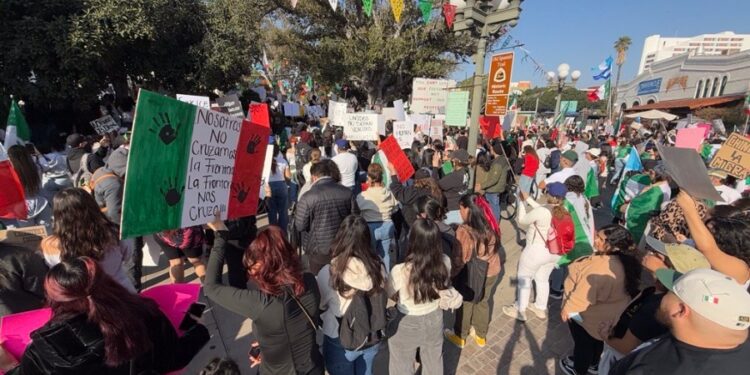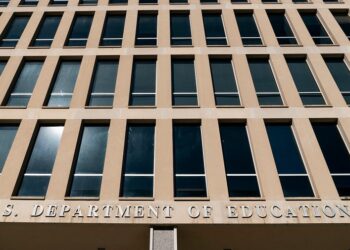A large — and growing — protest formed near downtown Los Angeles on Sunday in response to President Trump’s crackdown on immigration and emphasis on deportations.
The protest, which was organized and promoted on social media, was centered on the Placita Olvera on Olvera Street near DTLA. Olvera Street is home to a historic Mexican marketplace.
By 10:30 a.m., the protest had hundreds of demonstrators and was growing in size.

Many of the protesters were carrying signs, many of which were speaking out against Trump’s policies regarding immigration.
“The real criminal is in the White House,” one sign read. Another read “Jesus said ‘Love Thy Neighbor,’ not deport them.”
The Los Angeles Police Department has ordered multiple street closures in the area, including Spring Street between Temple and 1st Streets. In a post to X, the LAPD called the demonstration “non-permitted,” but also said the protests were peaceful so far.
Since his first day back in office, Trump has signed a flurry of executive orders, giving the military a greater presence at the U.S.-Mexico border and the reduction of restrictions previously leveed against Immigration and Customs Enforcement.
In the opening days of his second administration, Trump’s White House has been boasting its immigration arrest numbers on social media, which near 1,000 instances daily.
Under Trump’s new orders, ICE is now allowed to target migrants at sensitive locations, like schools and churches, for arrests and potential deportations.
“This action empowers the brave men and women in CBP and ICE to enforce our immigration laws and catch criminal aliens—including murders and rapists—who have illegally come into our country,” a statement from the U.S. Department of Homeland Security reads. “Criminals will no longer be able to hide in America’s schools and churches to avoid arrest. The Trump Administration will not tie the hands of our brave law enforcement, and instead trusts them to use common sense.”
Schools in the L.A. area have been handing out “Know Your Rights” cards, which let students know their legal protections if approached by an agent with ICE.
KTLA photojournalist Phil Ige contributed to this report.










